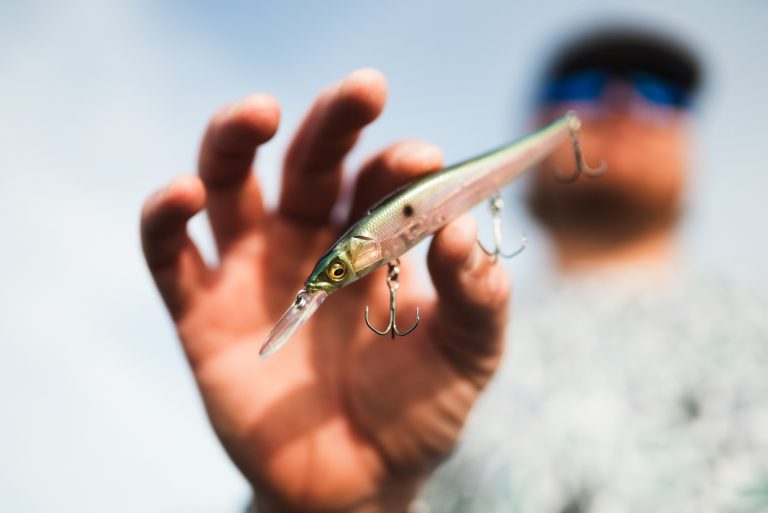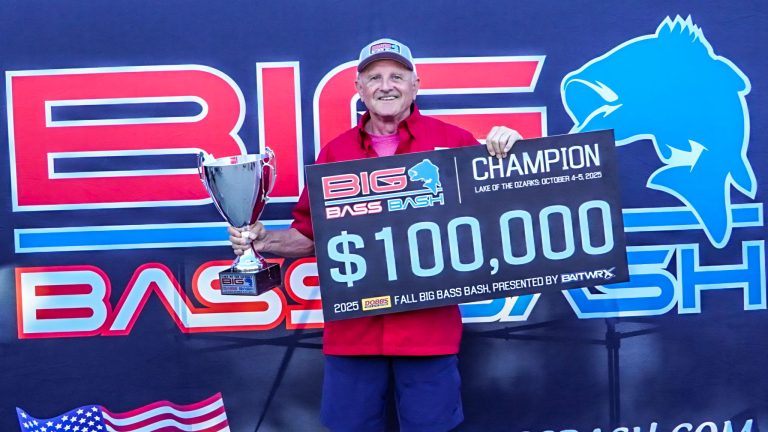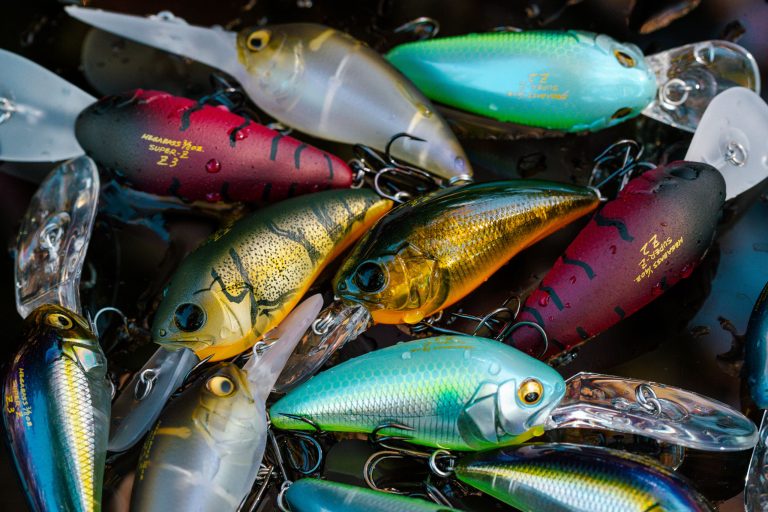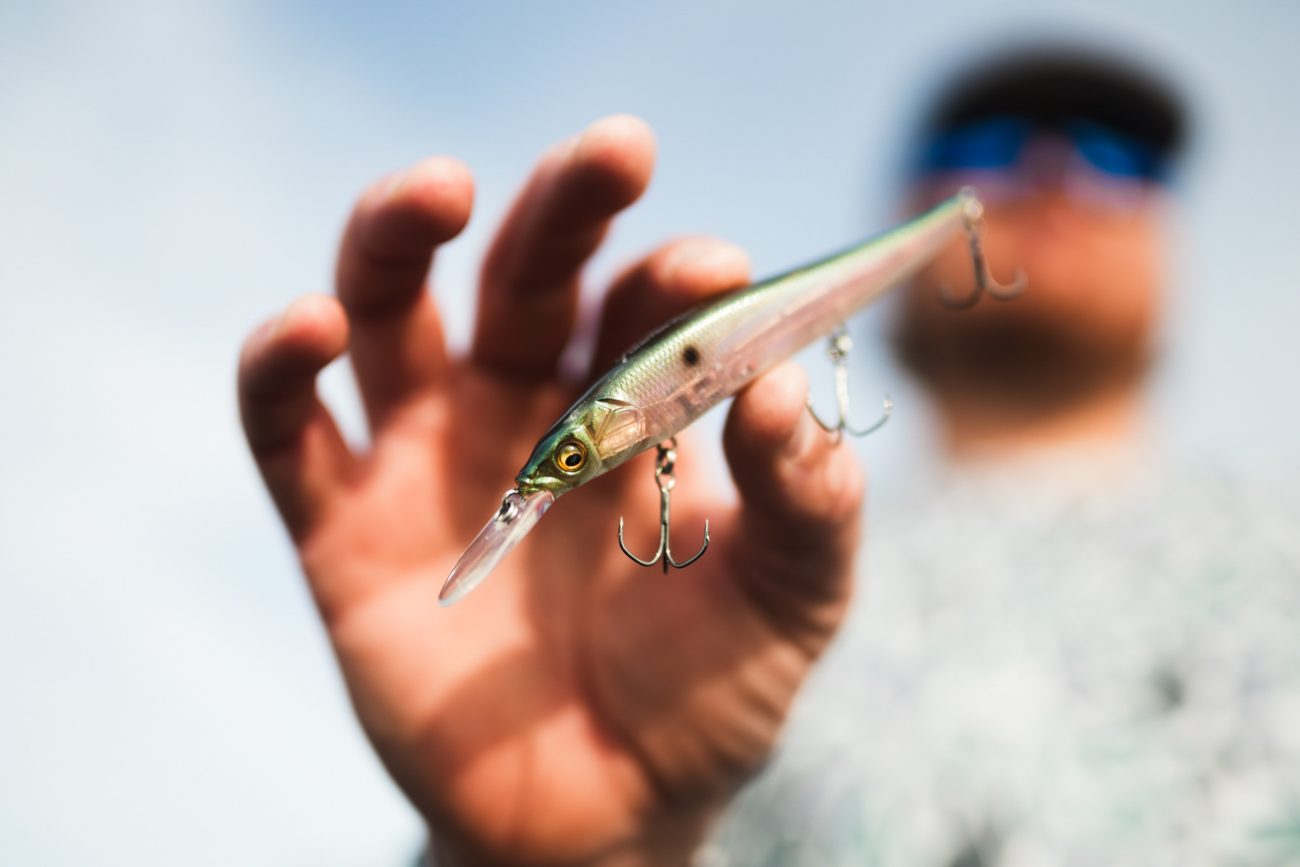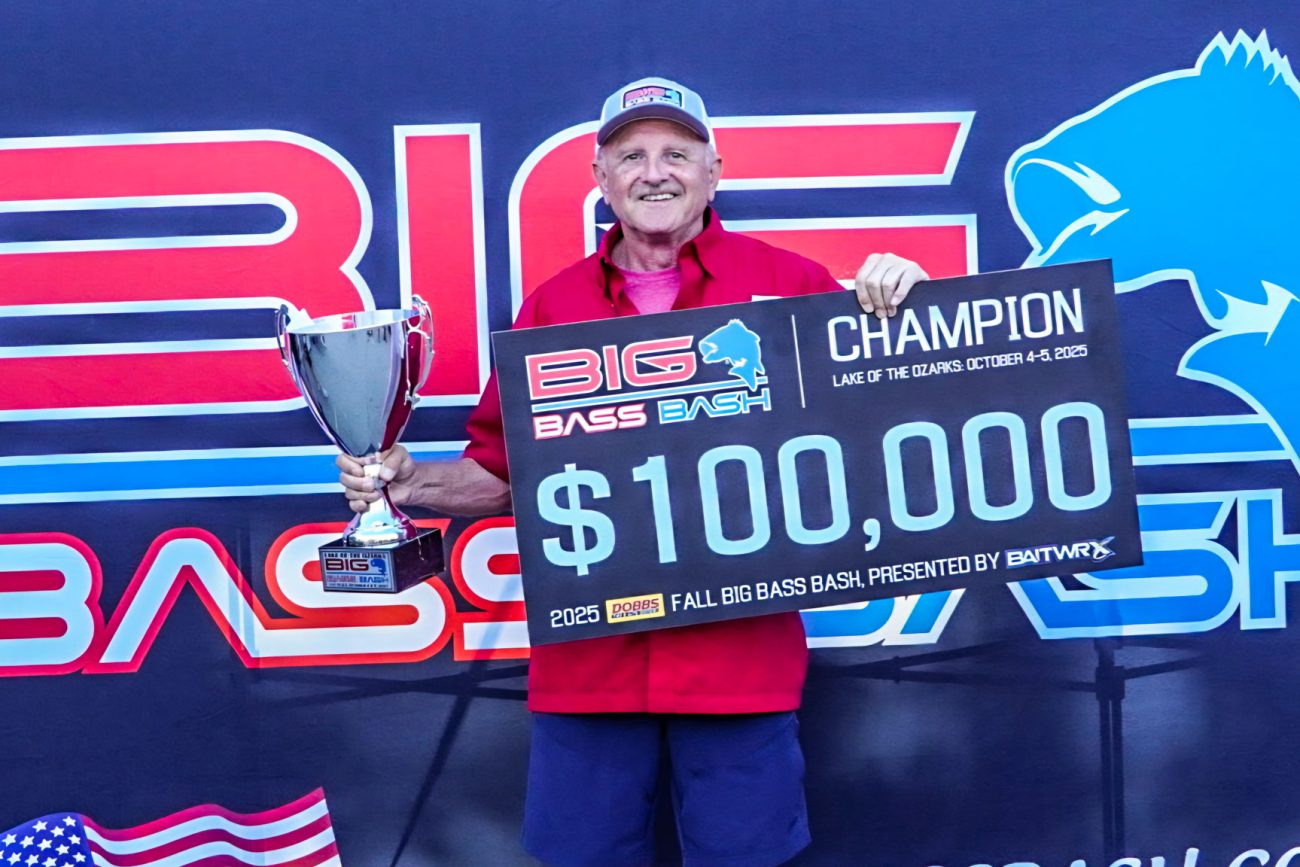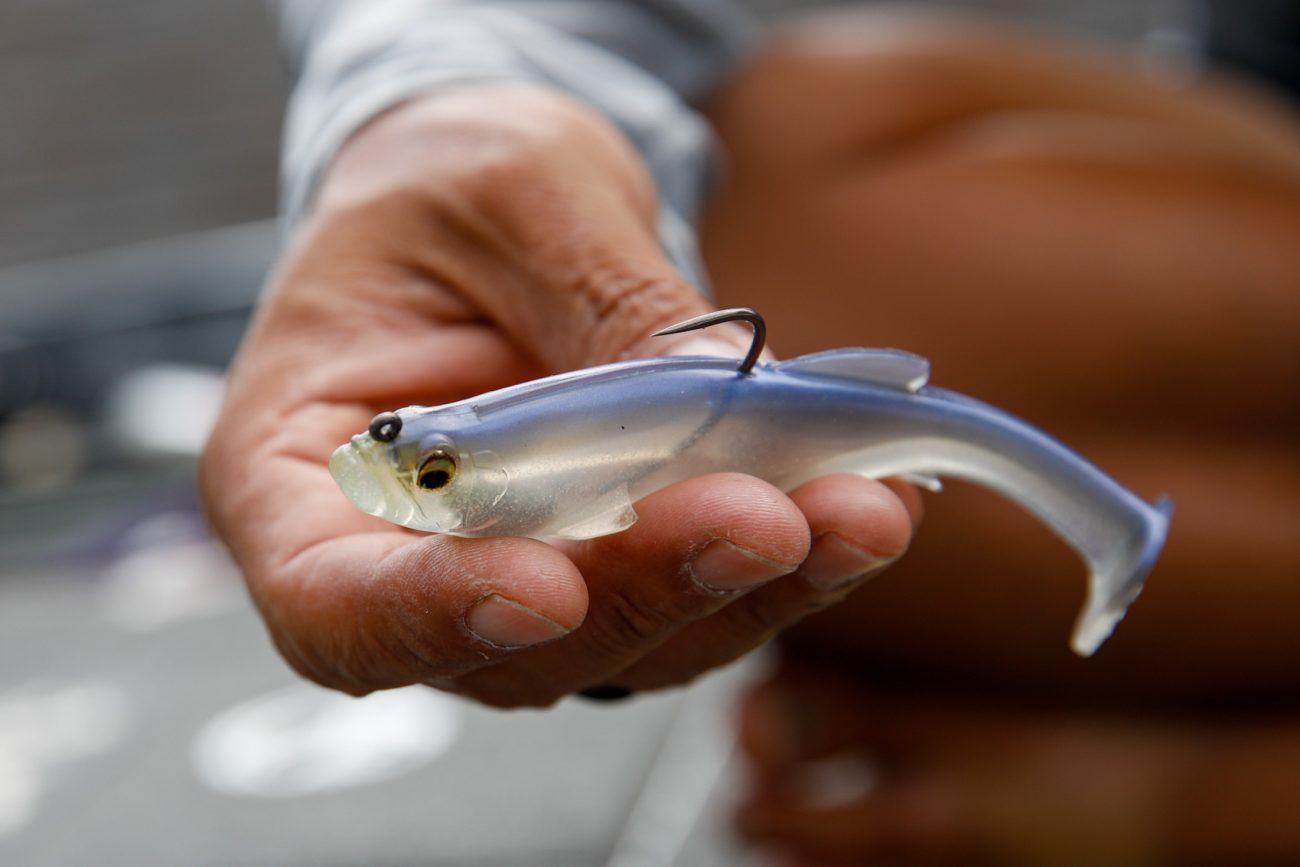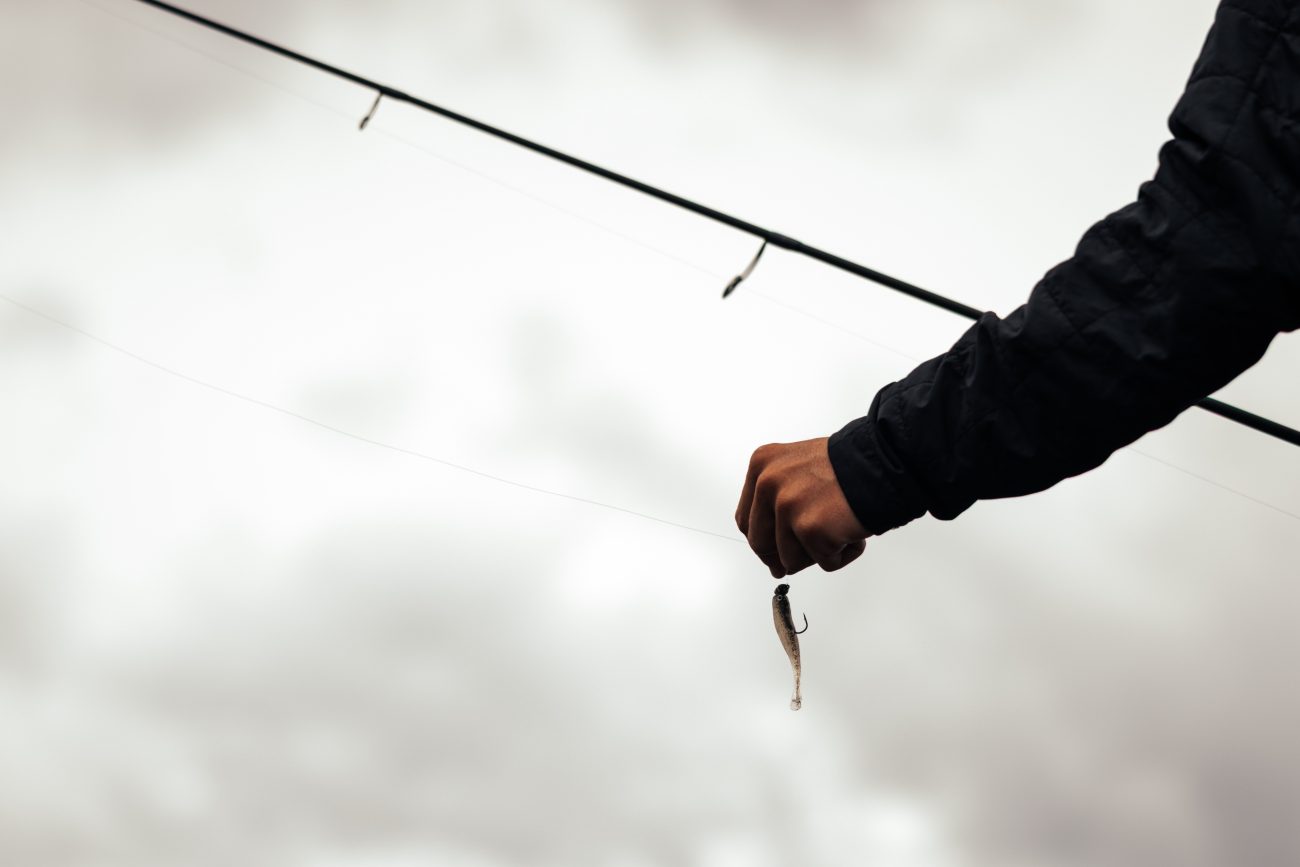Two-time Elite Series Angler of the Year Brandon Palaniuk has always had theories about jerkbait fishing and color selection, but now that he’s added forward facing sonar into his toolkit, he’s developed a formula for jerkbait color selection that works in any situation.
“I’ve used forward facing sonar as a learning tool to confirm or deny my previous assumptions,” said Palaniuk. “A lot of them still hold true, and there’s still a lot to be said for pure confidence in a color, but being able to see how fish react and being curious on the water has allowed me to expand that knowledge base.”
“It starts with a handful of colors – maybe four or five at most…”
It starts with a handful of colors – maybe four or five at most — and you don’t necessarily need to share the same favorites in order to emulate the process for picking the best one for a given day, or a given moment. Instead, focus on the flexible system that he refers to as “color bracketing.”
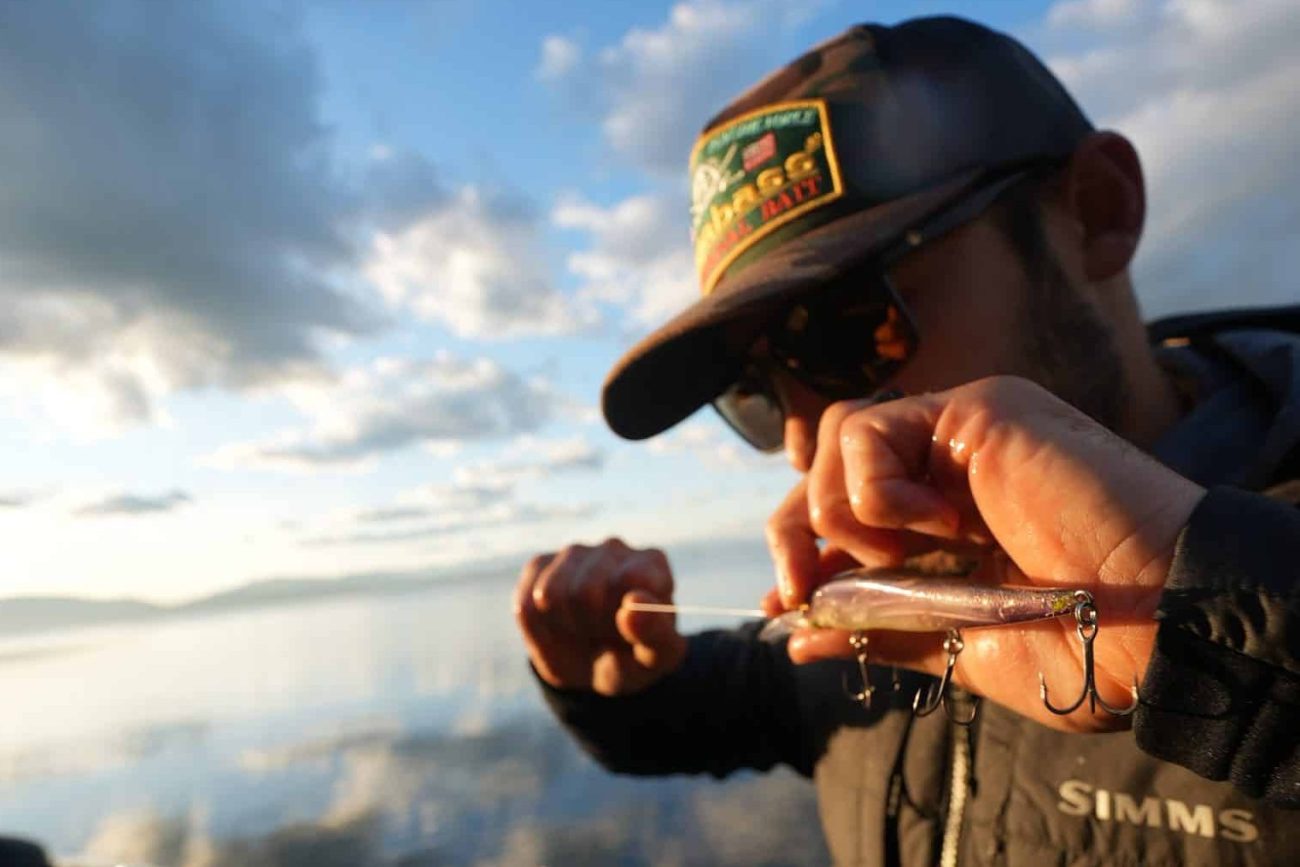
Don’t Put Blinders On
The problem with jerkbait color selection, as with just about all things related to fishing, is that there are no hard and fast rules that work 100% of the time. Just when you feel like you’ve figured it out, something throws a wrench into that understanding.
“Often you need to go against the general rule to test your assumptions”
Palaniuk said. “For example, we’ve always assumed that in gin clear water everything says to make it look as natural as possible. That means translucent colors, mild and toned down. But in reality, sometimes bright atrocious colors create reaction strikes. It makes them react in a different way. I don’t know the science behind that, only what I’ve experienced.”
As he’s delved further into the remarkably extensive and ever-growing Megabass color palette, at times it’s seemed like a huge opportunity fine tune his offerings, but at others it felt overwhelming. Harnessing the real-time insights into fish behavior provided by forward facing technology, Palaniuk slowly developed a tried-and-true system to dial in color selection and effectively select the best color for the conditions.
Selecting the Best Color for the Conditions
“I used to keep it really simple,” he explained. “In clear to semi-stained water, I might have had only two colors, like GP Pro Blue and Ito Wakasagi. Then I would have two shad colors – a whitish one like French Pearl OB and one more realistic, a pure shad color. And I’d have one variation of perch. That was it. I applied those to the place I was fishing, considering the forage and the water clarity. I was either going to get a bite or I wasn’t. That worked more 10 years ago than it does now. I didn’t know how many were looking or chasing and not reacting, unless they chased it to the boat or bit it and I was able to see it. But now with forward facing, I can see in real time how they’re reacting. And that has changed how I fish jerkbaits.”
“…now with forward facing, I can see in real time how they’re reacting. And that has changed how I fish jerkbaits”
Applying The Color Bracketing System
Palaniuk will often use those handful of favorites as his baseline, relying on his extensive experience to select the starting color he has the most confidence in for a given situation. But from there, his choices quickly branch out.
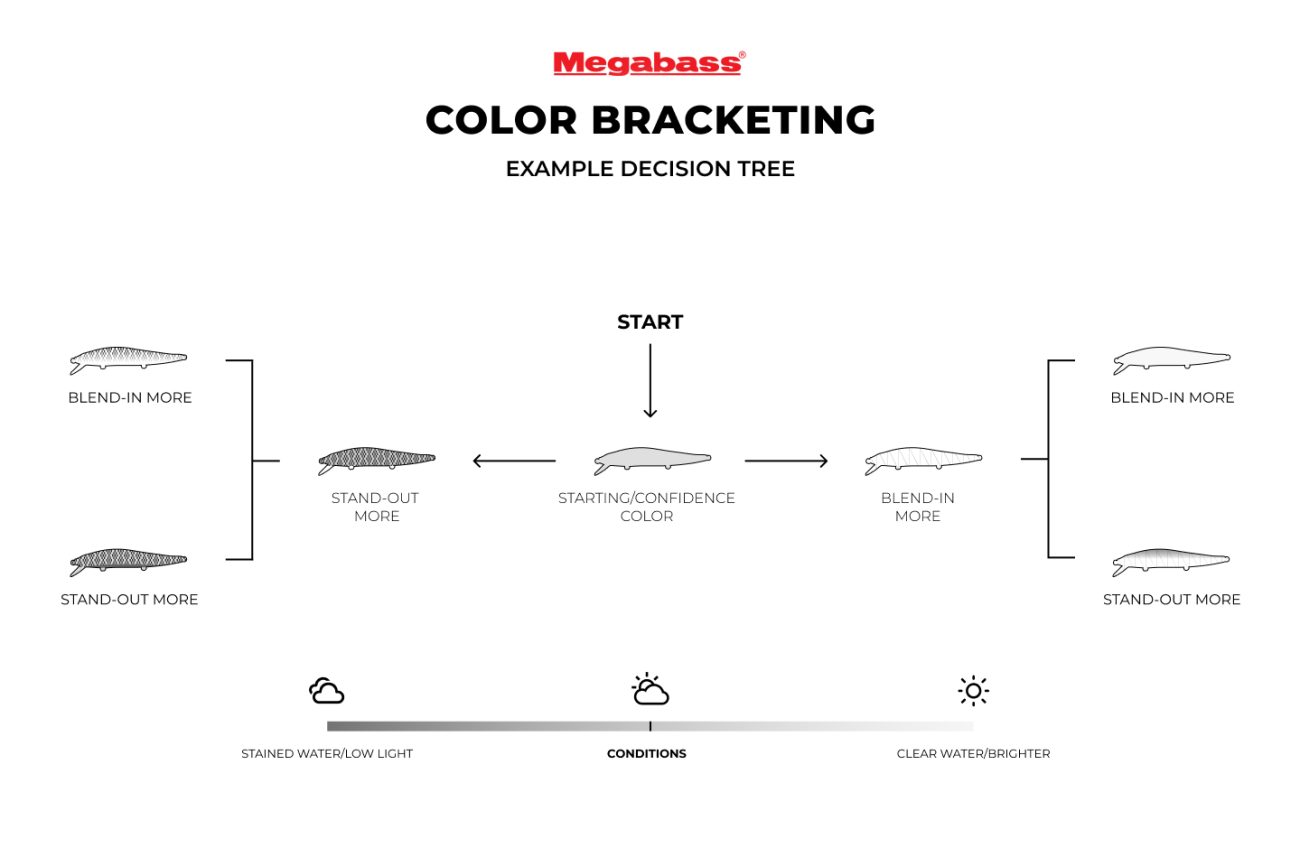
Picture an NCAA basketball tournament bracket, with the core options at the center, and then from each of them there are two choices –usually going more intense or more subtle.
And from each of those, two more. The ultimate winner may be the one that started the day, but often times it’ll take two, three or more switches until he finds the one that truly outperforms on a given day.
“Start with baseline colors that you have confidence in,” he explained. “For example, if I’m in clear water, I’ll start with one of my baseline colors, like Ito Wakasagi. If I’m not getting the reaction or quality of bites that I want, I’ll go to something even more natural or transparent—something that blends in more, like a GP Pro Blue. If I don’t see an improvement in the way the bass react, I’ll flip to the opposite end of the spectrum and choose something more opaque or bright than my baseline, like a GG Pro Blue, which has full body flash. Then I examine the response and refine further.”
Dialling it in
Once the strongest of the three choices is identified, the bracketing strategy can be refined further. For example, let’s say GP Pro Blue provoked the strongest response. That makes GP Pro Blue your new baseline of the day. The next step might be to try a similarly transparent option with a different back color, like GP Crystal Shad, and a brighter option like Elegy Bone to see which way bass are leaning.
There are multiple gradations between either extreme and the starting point, but it may take as many as six or seven choices to figure out which one they’re reacting to best on a given day. That’s why Palaniuk rarely—if ever—has only one jerkbait rod on the deck. Indeed, as the day progresses and light penetration or wind strength change, he’s forced to change along with them, even if a short time earlier he had what he thought was the right choice. Having bracketed colors ready to go provides a system to adjust to changing conditions on the fly and ensure that you don’t get stuck fishing history—and missing new bites.
Sonar
Of course, forward facing sonar helps speed the bracketing process up as it can reveal how fish are reacting, but even without the technology, bracketing is a great tool to navigate color selection and audit your assumptions.
Cadence Then Color
With the use of his Humminbird Mega Live technology, now Palaniuk has a better sense of how many fish are seeing his lures and showing various levels of interest in them, and while color may be the deciding factor in getting them to commit, it’s not his first move.
“I always change cadence first – it’s the easiest thing to change quickly. I want to notice how closely they’re following it – are they a foot behind it moving lazily, or are they mimicking it’s movement so you can’t tell the bait from the fish. The more they’re mimicking, the more aggressive they’ll be.”
“I always change cadence first – it’s the easiest thing to change quickly. I want to notice how closely they’re following it”
When bass continue to show interest, but cadence adjustments don’t generate the bite, color becomes a deciding factor. Some of his adjustments depend on which species he’s chasing – smallmouths and spots are typically more visual feeders than largemouths – but regardless he generally wants to figure out what sort of adjustment will trigger bites. Color bracketing gives him an evaluative criteria to select the best color for the conditions, with continuing input from his electronics to speed up the process.
Considering the Full Palette
Palaniuk admits that when he first signed with Megabass and started examining the full color lineup, including limited Japan and US releases, it was a bit overwhelming. But his guiding principle has been to consider the company’s ethos of purpose built design: “They think outside the box, and if they’re coming up with a color, there’s generally a reason and a need for it, no matter how specific.”
The experimentation has led him to consistently utilize patterns that weren’t previously in his arsenal. A few examples of new staples are GLX Spawn Cherry and Mat Shad. He said it’s ironic, and a little disappointing, that someone else won the Grand Lake Classic on that Mat Shad pattern, but it reaffirms his decision to make it one of his baseline choices over the past two years.
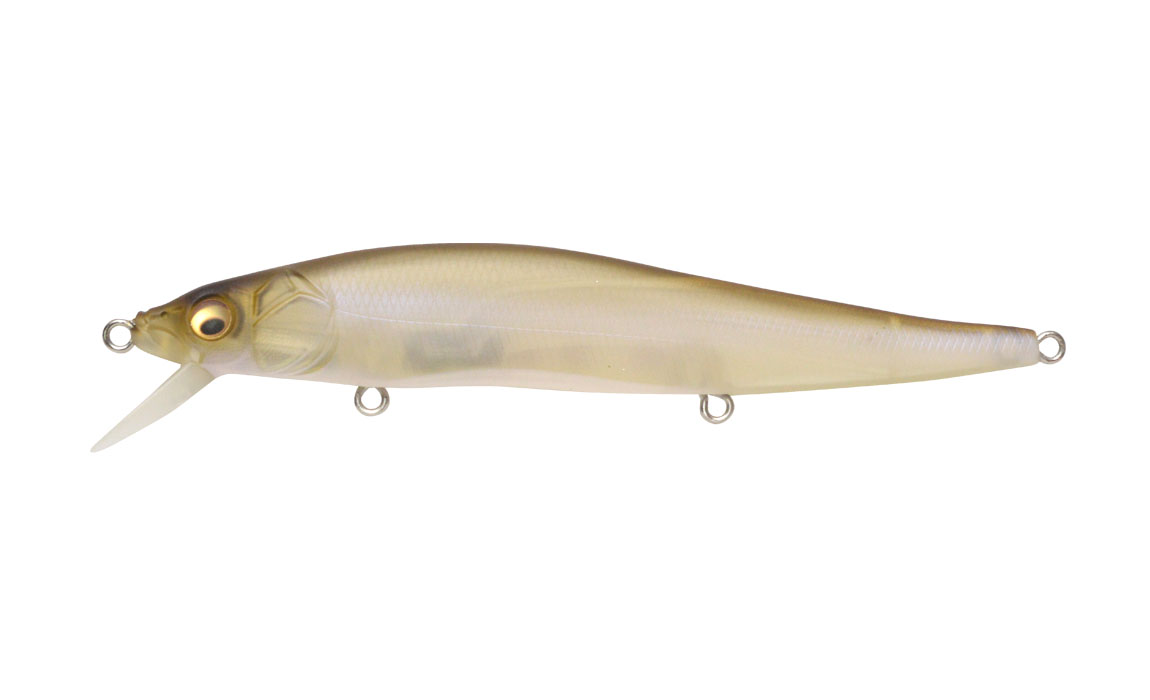

Fine-tuning
Sometimes small changes make a big difference. When fish are seeing a lot of Vision Oneten’s in Pro Blue, he might switch to a Pro Blue with a GG finish, which provides more flash, yet also still remains semi-translucent. Or he might go in the other direction, with a matte finished Mat Pro Blue option.
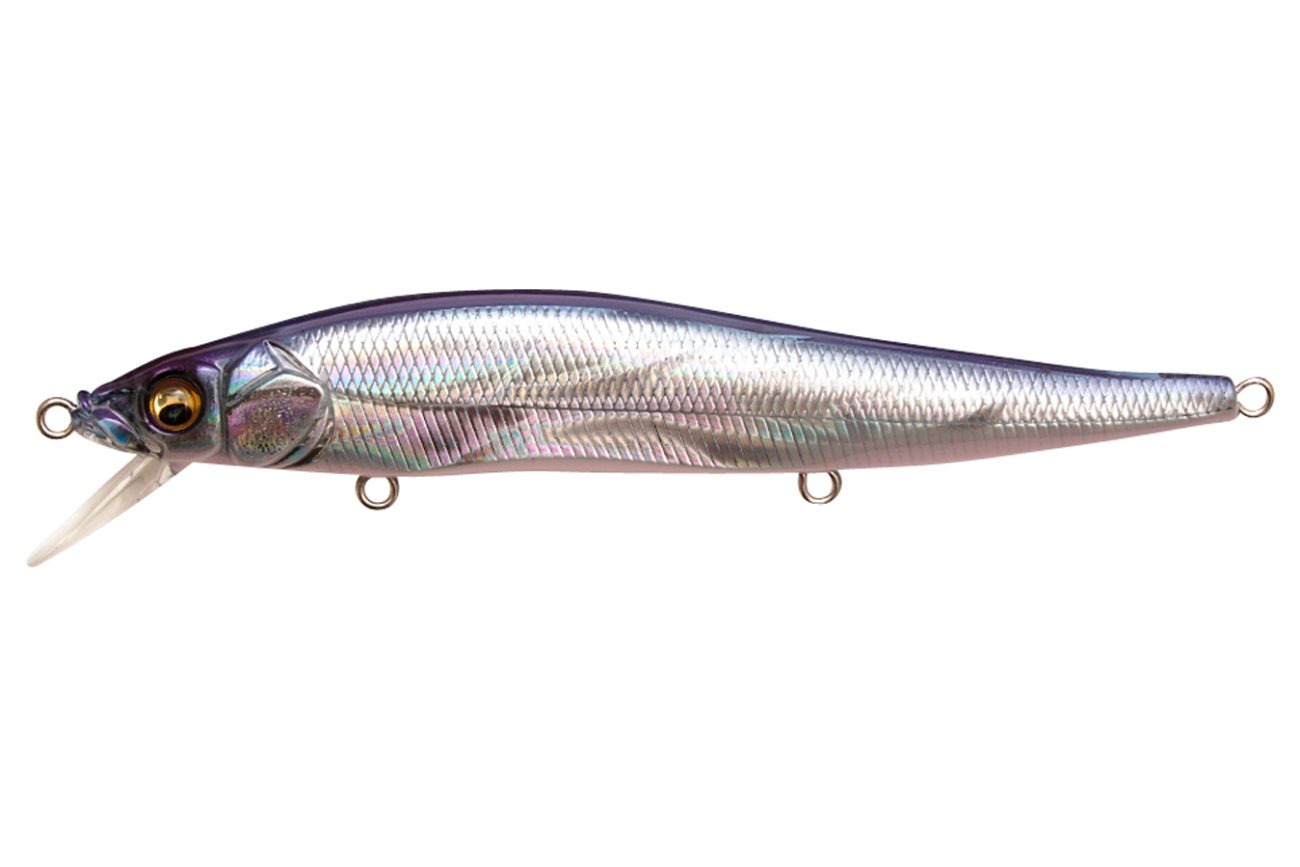
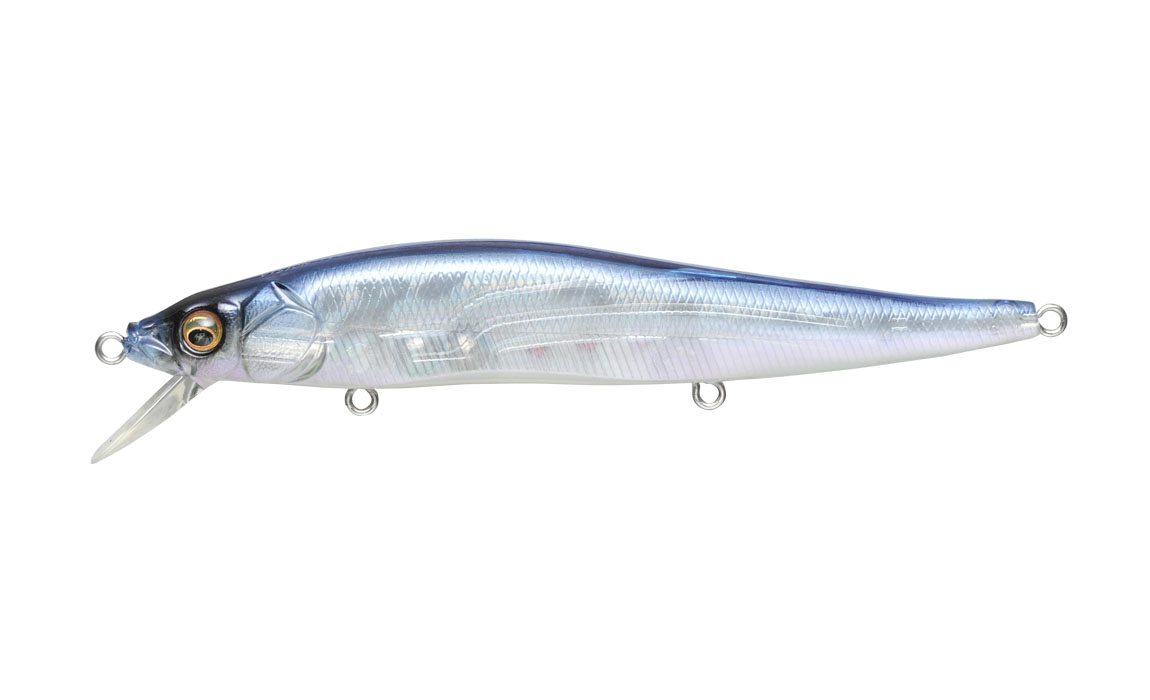
Many of the basic Megabass color patterns have similar hierarchies ranging from transparent to opaque and matte to metallic, with various reaction accent colors mixed in. While it’s not always feasible in terms of bite windows to cycle through all of them, if the fish aren’t fully committing, or if the bigger ones remain elusive, subtle tweaks will often make all the difference.
“I still probably have four or five main colors,” Palaniuk said. “Those are my baseline colors, my starting points based on conditions and experience, and then I start bracketing to work through the variations.” Besides the Pro Blue family tree, the Wakasagi grouping is another set that never leaves his Skeeter.
Profile Comes Next
All of this technology-enhanced learning has affirmed and grown Palaniuk’s belief that jerkbaits aren’t merely a seasonal tool, to be used in the coldest months. As he’s made them 12 month options, color selections aren’t typically seasonal, but rather relate to water conditions, sunlight and wind, as well as forage.
After changing cadence and color, though, there’s still the matter of bait profile and bait action.
“The Oneten is similar in size to the Ito Shiner, but it runs completely different,” he said. “Same with the X-80 and the Oneten Jr. Assessing all of those variables is the key to success.”
Recalling his 2023 top 5 finish at Santee Cooper, he thought through the process he used, and how his steps allowed him to make the right adjustments.
“I could see the fish on my forward facing sonar,” he said. “I threw a Vision Oneten and they reacted, but not well. They wouldn’t eat it. Then I switched to a glide bait and they would react but I couldn’t hook them. I didn’t have confidence in that for the four days of the tournament. I pulled out the Kanata. They wanted something with a bigger profile. They wanted something that would suspend. I needed something that would trigger them and that had a better hookup percentage. In that case, profile size was the trigger. Cadence and color followed that. I had found the secret sauce.”
It’s a constant process, and as noted above, there are no rules, but there are decision trees, guidelines and guardrails that keep him on the right path. It’s a lesson that every angler can utilize, not just for jerkbaiting, but also for each lure category and style.
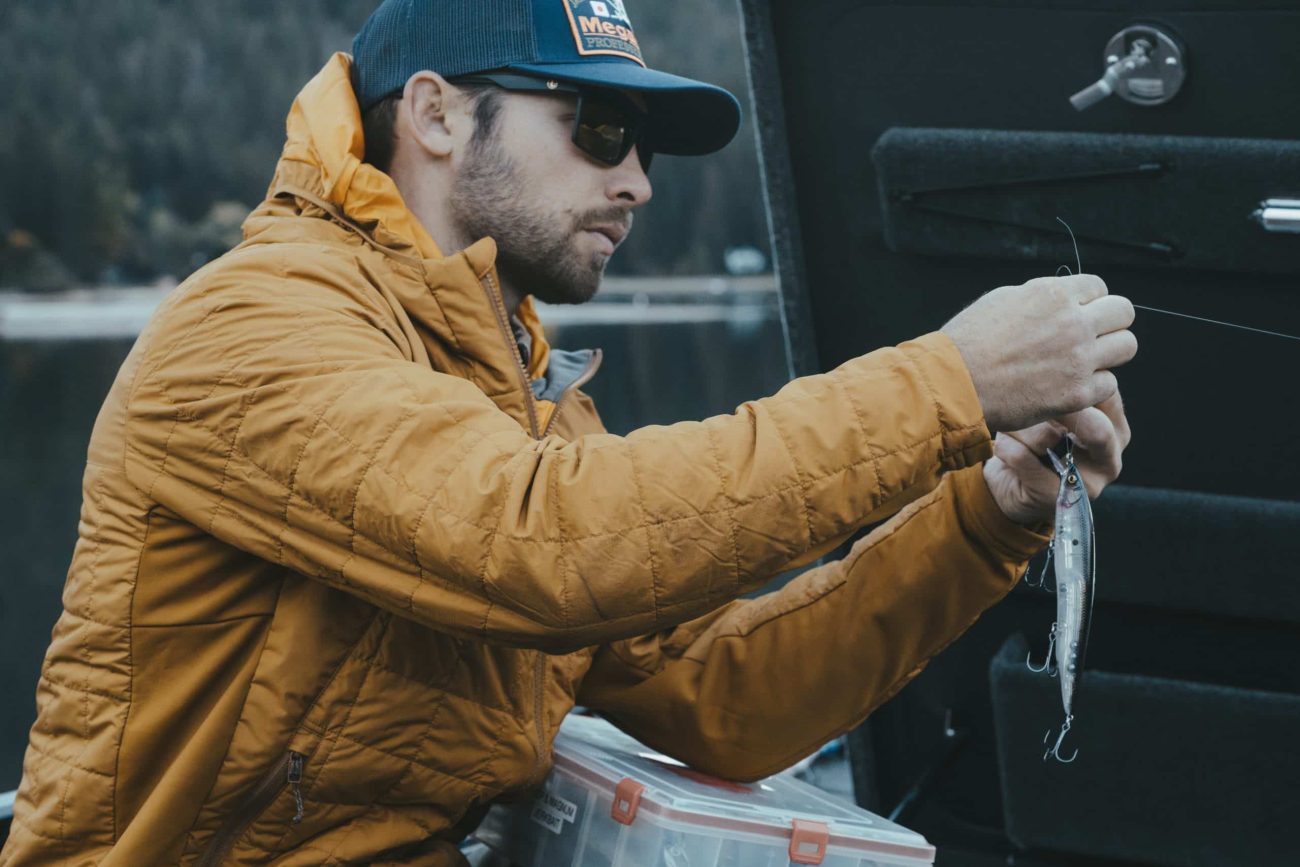
Trust the system: Adapt and apply
Many anglers ask him for his favorite baseline colors, the ones that serve as his jumping off points. They include Mat Shad, Ito Wakasagi, GP Pro Blue, HT Ito Tennessee Shad and Table Rock Shad, but he stressed that rather than using the same colors, it pays to adopt his bracketing system to harness Megabass’ extensive color range for your specific waters.
“I’m still learning,” Palaniuk concluded. “Every time on the water I tweak things a little and try to expand my knowledge. Every color I have in my jerkbait boxes helps me dial it in a bit further.”

